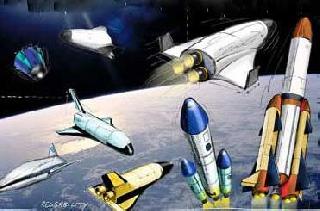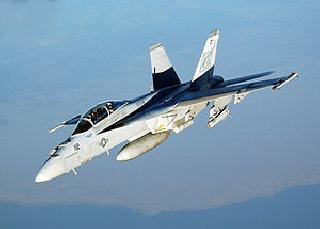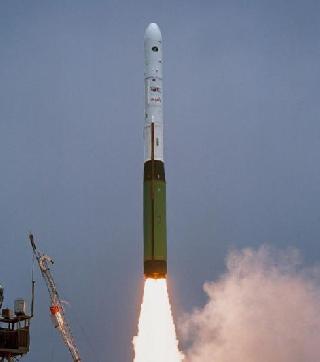
An artistic illustration of ESA's next-gen launch vehicles. A file photo
PARIS (BNS): European conglomerate EADS's aerospace subsidiary Astrium has won a contract from the European Space Agency (ESA) to continue the design and development of the next-generation Ariane 5 ME vehicle for future satellite launch missions.
The contract, worth 112 million Euro ($150 million), envisages development of sub-systems for the advanced Ariane 5 Midlife Evolution (A5 ME) rocket launcher.
ESA had selected Astrium in 2009 to undertake initial development studies for the next generation launcher (NGL), which would be used for future satellite launches. The company had received a contract worth 150 million Euro in December that year and in December 2011, ESA validated the Ariane 5 Midlife Evolution launcher project following preliminary design review.
Based on the 'two-in-one launcher' concept, the A5 ME vehicle will be capable of placing up to 12 metric tons of payload in geostationary orbit, with two satellites of over five tons being launched in a single flight.
The main upgrade for the Ariane 5 launcher is a new upper stage equipped with a restartable cryogenic engine developed by SNECMA (Safran Group). The nose fairing will also be extended by three meters to accommodate larger and heavier payloads, EADS said.
The advanced Ariane 5 ME will thus boost launch capacity by 20% compared to the current Ariane 5 ECA and Ariane 5 ES, for the same price, it said.
The decision on the final development phase of Ariane 5 ME will be taken by the ESA member states at the upcoming Ministerial Council meeting slated for November 2012, EADS said, adding that once the member states make their decision known, Astrium and its partners will commit to performing the Ariane 5 ME test flight from 2017, allowing Europe to consolidate its access to space.
 Previous Article
Previous Article Next Article
Next Article













The Indian Air Force, in its flight trials evaluation report submitted before the Defence Ministry l..
view articleAn insight into the Medium Multi-Role Combat Aircraft competition...
view articleSky enthusiasts can now spot the International Space Station (ISS) commanded by Indian-American astr..
view article